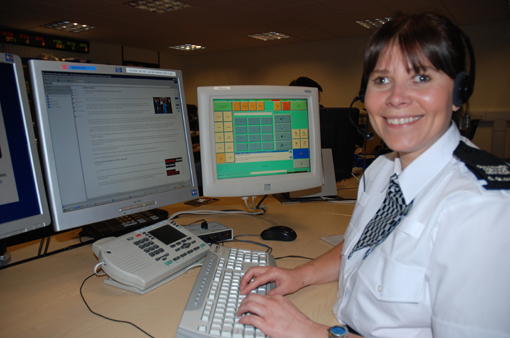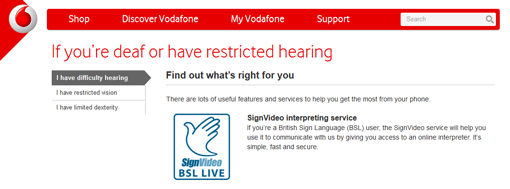We give you the low-down on diversifying your workforce with ease.
Many employers have found that by hiring disabled people they are able to extend the pool of high-quality applicants available to them. Once in post, employers often report that disabled workers are highly motivated, have excellent attendance records and make a positive impact on the people they work with.
Employing wheelchair users

Call centres situated in business parks will find it easiest to accommodate wheelchair-bound agents. This is because a lot of these sites are already equipped with wide doors, lifts and designated car parking spaces. If this sounds similar to your office, all you will need to do is adjust your agent’s workstation accordingly.
It is best to hold a planning meeting with your prospective agent before they start work and discuss these changes face-to-face. This will give you the opportunity to find out exactly what they need, whether this be a desk that accommodates their wheelchair or a chair that adequately supports their neck, and set a realistic start date in line with the alterations that need to be made.
You should also make sure that there is enough room for your agent to manoeuvre themselves around the office in their wheelchair. If you are pushed for space, you could try creating a wheelchair-friendly zone, a designated area designed to allow easy access to everything your agent will need without disrupting the layout of the entire office.
“2 of my team were wheelchair bound…”
Whilst managing a technical helpdesk, 2 of my team of 15 were wheelchair bound – one had broken his neck and had movement from the shoulders up and another had severe osteoarthritis.
Both had very positive attitudes at interview, performed as well as any other team member and needed minimal support aside from initial desk adjustments. They had excellent attendance records and a very positive attitude, as they were thankful to be in work which helped their mental health and financial situations. There was a clear change in the rest of the team in terms of attitude, attendance and perception of disabled people.
With thanks to Alison
Employing remote workers

If you are unable to physically accommodate a wheelchair user in your office, you could consider employing them remotely.
The rapid technological developments in this field are making remote working an increasingly simple option, especially as all your agent needs to get started is a computer, a phone line and the internet.
This solution enables your agent’s specialist needs to be accommodated within the comfort of their own home, whilst simultaneously eliminating the need for complex logistics.
Employing the blind

For a long time, blind people have been employed in contact centres or switchboards. We first wrote about this back in 2005.
The employment of blind people in call centres was thrown back into the limelight in 2011 when Carmen Glover, believed to be the first blind person in any police force in England and Wales to take 999 calls, won a Call Centre Management Association award.
Her experience highlights the importance of technology in propelling disabled people into the call centre environment; as Carmen’s employment was only made possible by the investment in specialist screen-reading software. This technology allows her to answer calls in one ear of her headset, whilst listening to the screen reader in the other.
“I’ve been working for Nottinghamshire Police as a call handler for 5 years,” said Carmen Glover. “The equipment I use has been invaluable and it would be impossible for me to work without it. I am grateful for Nottinghamshire Police giving me that initial chance and investing time and money in enabling me to do the job I do, and in return I give 100% with every call I take.”
To successfully assimilate a blind agent into your contact centre, you would need to invest in a similar screen-reading software package.

Carmen Glover at work with her screen-reading software
What is screen-reading software?
Screen-reading software is a form of assistive technology which attempts to identify and interpret what is being displayed on a screen. This interpretation is then re-presented to the user with text-to-speech, sound icons, or a Braille output device.
There are a variety of screen-reader software packages available, ranging from costly high-end products to free and open source software packages. The choice you make will depend on both your budget and the specific preferences of your prospective employee.
“Patting the guide dog helped relieve stress in the team…”
I once visited a call centre that had a visually-impaired employee. The centre had made significant changes to his workstation to accommodate the employee, including changing the layout of desks in his immediate area and repainting pillars to give visual guidance for him to get around.
The most significant change they made was to allow him to bring his guide dog in and stay in an area behind his desk during his shifts. It’s hard to say what effect having this employee as a team member had as they just treated the situation as ‘normal’ for them, as indeed I hope we all would! (However, they did say being able to go and pat his dog and play with it helped them if they ever got stressed.)
With thanks to Peter
Employing the deaf

Ten years ago the idea of employing a hearing-impaired contact centre agent would not have been given a lot of time. But the industry has changed a lot since then.
Customer service is increasingly branching out into multiple channels, including email, social media and online chat, in order to meet consumer demand. The opportunity has subsequently emerged for deaf people to respond to customers by reading and writing, rather than listening and speaking.
If your contact centre is already divided into a series of sub-teams in line with the various communication channels, it will be relatively easy to employ a deaf agent to work solely on a non-verbal channel. Yet it should be similarly straightforward if you are using an integrated platform, as you should be able to accommodate a deaf agent simply by disabling any verbal communication channels at their workstation.
Video technology can help you to accommodate deaf employees and customers
Incorporating video technology into your contact centre is another way you can accommodate the needs of deaf employees and customers.
The most recent company to have incorporated this technology into their customer service strategy is Vodafone. Through the use of a SignVideo solution, customers with hearing impairments are able to connect to a Vodafone representative via a live British Sign Language (BSL) interpreter who will translate queries and answers in real time.

The accessibility section of the website displays a viable option for BSL users.
See our article for more information – Everything you wanted to know about using video in the contact centre.
Overcoming issues with in-office communication
The main challenge you’ll need to overcome is in-office communication, especially when it comes to conveying information during training and team meetings.
The scale of the issue will depend on the individual agent. If they are confident lip readers, you will just need to ensure that everyone in the office makes direct eye contact with them whilst speaking. However, if they are largely dependent on sign language, then you may need to hire someone to assist them.
An alternative solution is to recruit a support worker internally. Finding an employee that knows sign language and would be willing to help could be a practical and low-cost way to accommodate the needs of your prospective agent. However, you must be careful not to take advantage of your volunteer support worker; perhaps offer them a premium car parking space or a few extra days of annual leave to make it worth their while.
It is also advisable that you meet with your prospective agent to discuss how their disability should be accommodated, rather than making assumptions and wasting money on support they don’t need.
Covering the cost of purchasing specialist equipment
One of the main concerns employers have about employing a disabled person is the cost of the equipment often needed to accommodate them.
Fortunately, there is an ‘Access to Work’ government grant available that can help alleviate these costs. This isn’t something that the employer can apply for directly but rather a fund accessible by the employee. It is advisable that you ask your prospective agent to apply to this fund at the earliest opportunity.
If their application is successful, an ‘Access to Work’ grant can help towards the cost of:
- adaptations to the equipment used
- the purchase of special equipment
- a support worker or job coach to help your prospective agent in the workplace
- disability awareness training for your existing employees
“I have employed a number of disabled staff over the years…”
I have employed a number of disabled staff over the years. In my experience, as long as they really can contribute to the team effort (with the right equipment and support), then the impact on the contact centre IS positive.
An example is Kerry McGregor (who later appeared on X Factor). She was very positive and her outlook rubbed off on her team mates.
With thanks to Stewart
Have you employed disabled people in your contact centre? Has it been a positive experience? Has it been beneficial to the rest of the team?
Please leave your comments in an email to Call Centre Helper
Author: Megan Jones
Published On: 9th Oct 2013 - Last modified: 18th Aug 2025
Read more about - Call Centre Management, Accessibility and Disability, Management Strategies
















Generally a positive article about emplying disabled people. Only criticism is that people are wheelchair users, they are not bound to them.
We have not encountered any disabled applicants yet but this article is so inspiring to the employees who complain so much but are physically able.
I am a disabled candidate who have call centre skills am struggling to find call centre position.